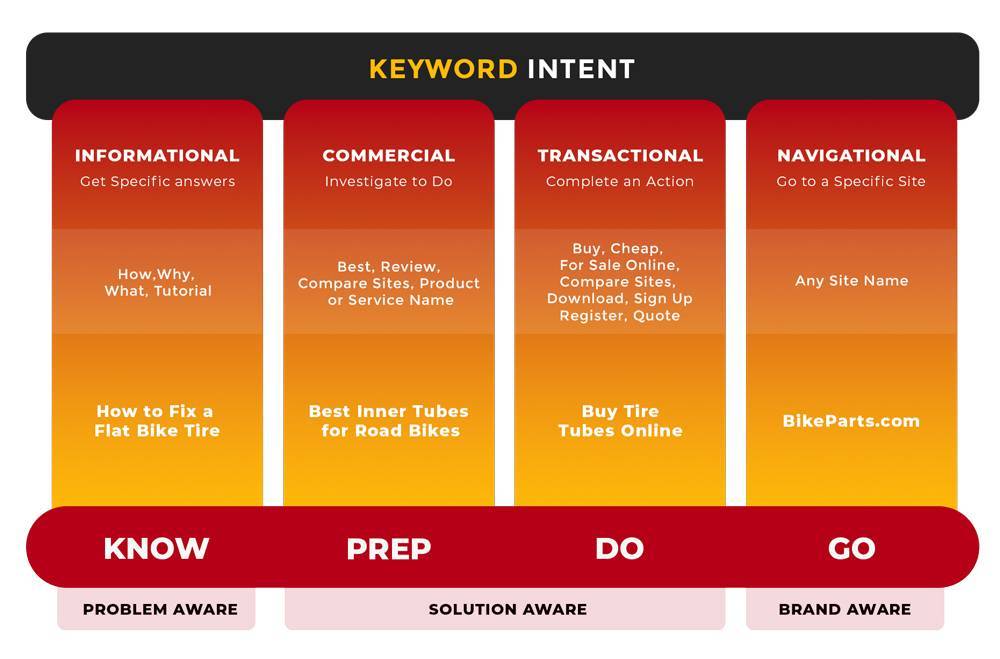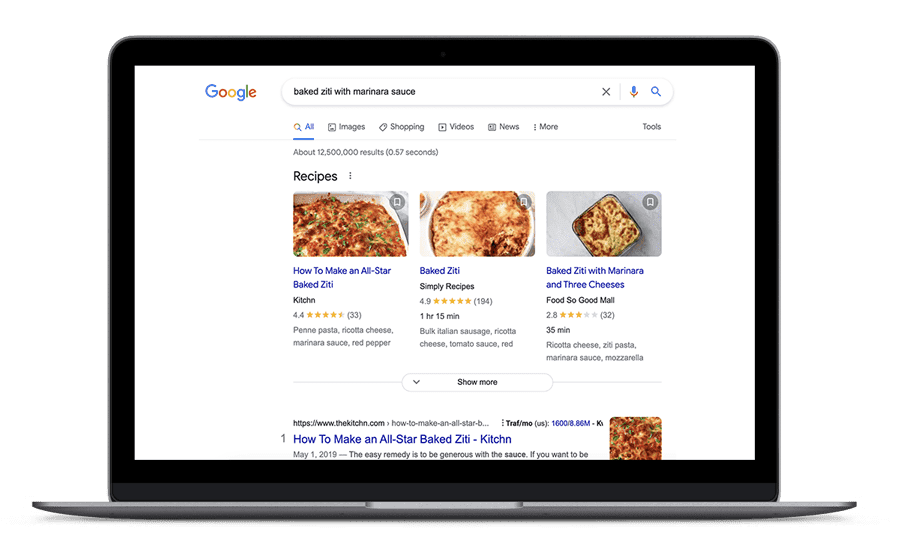Table of Contents
Content development isn’t something that should be taken lightly. No matter what line of business you’re in — interior design, auto mechanics, consumer goods, third-party services — every line of business should have a content strategy.
Your content strategy will guide the development of all of your content. Your content strategy will also ensure that you’re not pouring hours into a piece of content, regardless of how beautifully written or produced, that will go unseen by your target audience.
Carefully, thoughtfully, and strategically developed content is what will get you visibility, traffic, and conversions. And, when you boil it all down — those three things are all that matter.
This guide outlines how to select topics and keywords, what format your content should be (written, graphic, or video), and more. Following this guide will help you to create content that truly resonates with your audience.
What is Content Development?
Content development is the full process of researching, strategizing, creating, distributing, and monitoring content relative to reaching a business goal or objective. Whether the goal is to build brand awareness or simply make sales, creating content that is relevant to your audience will build trust while informing them of your product or service.
Developing a content strategy is critical to any marketing plan. Some aspects of it include:
- Analyzing competitors
- Choosing the right keywords and understanding intent
- Knowing your audience
- Optimizing content for search engines
- Monitoring website performance
Each one of these components is essential to curating content that will build your bottom line.
Why is Content Development Important?
Simply put, content creation is important if you want to achieve any of your goals. By creating new content that is published on your website, you’ll be able to:
- Teach your audience about your product or service. But don’t just spout off reasons why it’s so great, but paint a picture of how it can make your personas’ lives easier and better (more on developing personas a bit later in this guide). It needs to solve a problem. It needs to take them out of their hell, and into their heaven.
- Provide a resource to others and, in turn, garner backlinks. Gone are the days of buying backlinks. Now, just like anything else, they need to be earned. By producing and publishing high-quality content, others will see you as an expert and link to your website content from theirs. This makes for a symbiotic relationship of increasing your domain authority, which will get you higher in search engine rankings. That will provide a resource to another domain that will help them earn credibility with search engines — thus perpetuating the cycle.
- Fuel the search engines so that your prospects can find you. Search engines care about domain authority, keywords, and traffic. By continually publishing content that is optimized for keywords that are directly relevant to your products and services, you’ll have the opportunity to engage with your audience. Optimized content that is continually getting visitors will help the search engines to establish your expertise, authority, and trustworthiness — which is the end-all, be-all in the eyes of the search engine deity … Google.
Of course, this isn’t an exhaustive list of benefits for your content marketing strategy, but they are three of the core components. In short, if you want to stay relevant in your market space, you need to create content.
How to Create High-Quality Content
While there isn’t one way to develop content that works for everyone, take this guide as a starting point. And, your content developers create great content, and you’ll be able to refine your process so that it works for you, your goals, and your audience.
1. Set Your Goals
First things first. Goal setting. Before you even think about putting pen to paper, you need to know your “why.” Why are you creating content? Upon answering that, ask yourself “why” again and again until you can get to the root of what you want to accomplish.
Perhaps you have a new product line you’re launching. Or maybe you’ve noticed that your clients aren’t aware of the breadth of your spa services outside of facials and massages. Whatever your goals are, all content that you create must tie back to your goals, or you’re wasting your time, money, and effort.
2. Identify Your Target Audience
Once your goals are set, you need to identify who you are targeting and create your buyers’ personas. It can be easy to forget who you’re directing your messaging to when you’ve been marketing your product or service for a long time. You must understand who your personas are, relieve their pain points, and recognize where they fall in the sales funnel.
To be even more effective, go one step further after you’ve developed your personas and perform empathy mapping to get the full picture of what you need to include in your content to relate to your prospects.
3. Find Where You’re Falling Short
Performing a keyword gap analysis will provide insight into which keywords your competitors are ranking for and you’re not. Once you’ve determined your top competitors you can use a tool, like SEMRush, to pull a report that compares the keywords your domain is not ranking for in comparison to your competition.
Once the keyword research has been compiled that your website is not ranking for, you can review it to determine which are most relevant to your business and the opportunity you have to create a piece of content based on that keyword.
This step in the process is incredibly helpful so you can see where you’re falling behind, and where you need to focus on in your SEO efforts.
4. Develop Your Content Plan
Upon reviewing your list of keywords that are in the keyword gap analysis, you can develop your SEO strategy in several ways. You’ll need to determine which content marketing strategy is best for you and which set(s) of keywords you’ll target:
- Missing — Keywords that all of your competitors are ranking for you, but you are not.
- Weak — Keywords you’re ranking for, but your competition is ranking higher.
- Strong — Keywords that you’re ranking higher than your competitors.
- Untapped — Keywords that one of your competitors is ranking for and you’re not.
- Unique — Keywords that you’re ranking for but none of your competitors do.
Once you’ve determined which subset of keywords you want to target in your SEO strategy, now the fun part starts. Topic ideation.
Topic Ideation
As you create your content plan you need to keep your potential customer in the forefront of your mind as you develop the topics for each keyword. You must also consider keyword volume, difficulty, and intent.
Let’s say that you own an Italian restaurant, and started selling your signature marina sauce. But as you develop your content calendar, you find that “marinara sauce” is very difficult to rank for, but “baked ziti with marina sauce” is within striking distance.

While “baked ziti with marina sauce” is a long-tail keyword with lower volume (see: you’ll get less traffic). But, these searchers are typically more motivated. So, as they land on your site, it will establish stronger domain authority. As more and more traffic finds your content your domain authority will continue to grow. And, gradually not only will it rank for “ziti with marinara sauce,” it will also rank for “marinara sauce.”
So, going after those lower volume keywords isn’t always a bad idea — especially if you have a brand-new site.
Choosing Your Content-Type
Another aspect of developing your content calendar is to determine which content type you’ll create for your selected keywords. You can easily figure this out by conducting a SERP analysis.
When you chose to target “baked ziti with marinara sauce” you may have thought that a video was the way to go. However, upon reviewing the SERP, you’ll see that a step-by-step, how-to guide with photos is your better option.
By keeping the SERP intent in mind, it will suit the SERP purpose and will have a better chance of ranking.

5. Create Your Content
So, you’ve done your research. You have your plan. It’s time to create that first piece of content. Whether you write it in-house or outsource it, be sure to create your content brief to provide a guide for the content creator to understand voice, tone, audience, keywords, related topics, and other information that is pertinent to your topic.
Make it About the Searcher
It’s easy to fall into why things are important to you and your brand, and the things you’ve done to create your product. But it’s not about you. It’s about your target persona. Your clients. You need to make them feel special and individual.
By steering clear of “we” language as much as you can and use “you” language. Instead of saying, “We developed this sauce so you can feed your family,” you can opt for, “Your family will have full bellies and smiles on their faces when you cook with this sauce.”
You should incorporate your brand voice and unique selling proposition, but make sure you also incorporate the valuable information in your empathy maps.
Content-Length
How long should you make your blog post? Great question.
There is no ideal word count. Casey Crane from The SSL Store states, “We don’t have a hard-and-fast rule about word count when publishing and optimizing the content on our blog. Sure, we want to make sure that every article meets a certain minimum word count, but there isn’t an exact word count that we’re looking for. This isn’t like print media where we have to meet an exact number of inches.”
Deciding whether you should use long or short-form content is dependent on the keyword. A good place to start is your SERP analysis. Take a look at the top-ranking results. Or, if you have access to them, you can use a tool like MarketMuse or SurferSEO to determine this.
But a good rule of thumb is, don’t ignore your keywords and answer the questions your audience is asking.
6. Optimize Your Content
Once your content piece has been drafted, reviewed, proofed, and gone through the editing stages the next step is to optimize it.
This is when you add in all the elements that the search engines are looking for:
- Create a catchy title and add header tags throughout.
- Add visuals, photos, and infographics (head back to the SERP if you have any doubts on what to include).
- Ensure your keyword, keyword semantics, and framing keywords are abundant. Just be sure you don’t overdo it to the point that Google thinks you’re keyword stuffing.
- Add internal linking by connecting your content to your appropriate pillar page so that search engines can determine which pages on your site are the most important.
- Link to third-party, trusted sources — or backlinks — to increase your domain authority.
- Add meta title, meta description, alt text, image text, and any other on-page elements that are crawled by the search engines.
And, of course, do not forget your CTA. Make it bright. Make it very clear. Don’t be passive. Articulate for your viewer what you want them to do next.
7. Publish and Promote
You made it. It’s time to push your fledging from the nest, and out on their own to survive … but not without giving it a fighting chance.
Once your content is freshly live on your website, you need to promote it. Just because you build it, doesn’t mean they’ll come. You need to get it in as many places as you can so there are as many entry points as possible. Developing a content distribution strategy will keep you organized and prevent you from haphazardly posting the content in places that may or may not be appropriate.
You can give your web content legs by publishing it in its original form but also by:
- Posting on social media.
- Adding to your newsletter.
- Converting blog posts to video or video into a blog post.
- Structuring it as a topic on your blog.
The list goes on and on. Your content distribution strategy will identify where your audience is most active and which formats you should convert it to.
Your Content is Live, Now What?
As easy as it would be to publish your content and let it be, that could not be further from the truth. It needs to be monitored. Is there traffic? Is it growing your domain authority? Is it converting? Is contributing to the business goal that it was created for in the first place?
There may also be great things happening as a result of your content that you haven’t considered. Yes, while sales are the first priority you may also be getting more newsletter sign-ups, more qualified leads, and more traffic to your website in general.
The digital world and algorithms are constantly changing, which means that you need to constantly be monitoring your content so you’re not caught off guard if your rankings drop or if there are changes in volume. One of the best ways to monitor these changes is checking in on your Google Analytics 4 account.
Refine Your Content Development Process
And, as any process goes, monitor and improve your content development process as you move through it. There are a lot of moving parts. And, the more familiar you are with it, the easier it’ll be to identify bottlenecks, suggest improvements, and make it more efficient and streamlined for you and your team.
If you need some guidance, RedShift is here for you. Content development is one of our specialties. We live it. We breathe it. And, we’d love to live and breathe yours. Contact us to to create a content marketing strategy that will get you seen and get you results.

